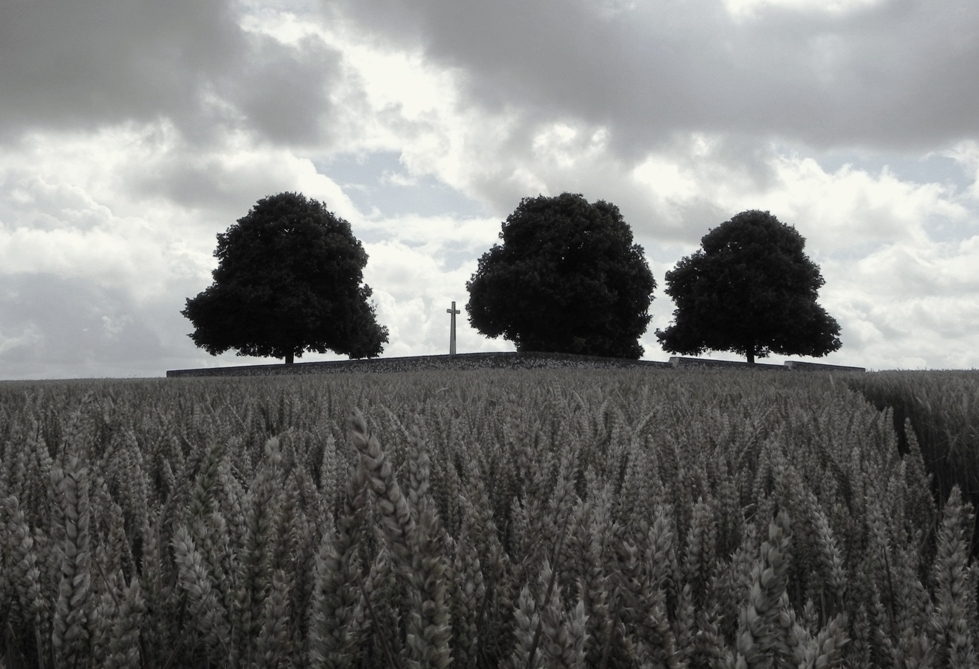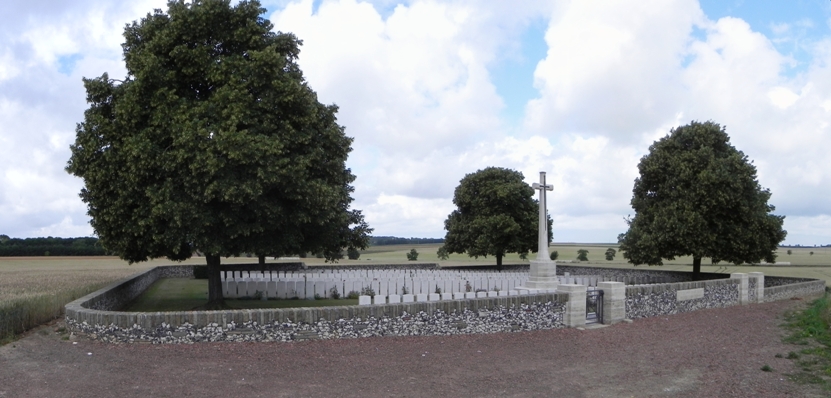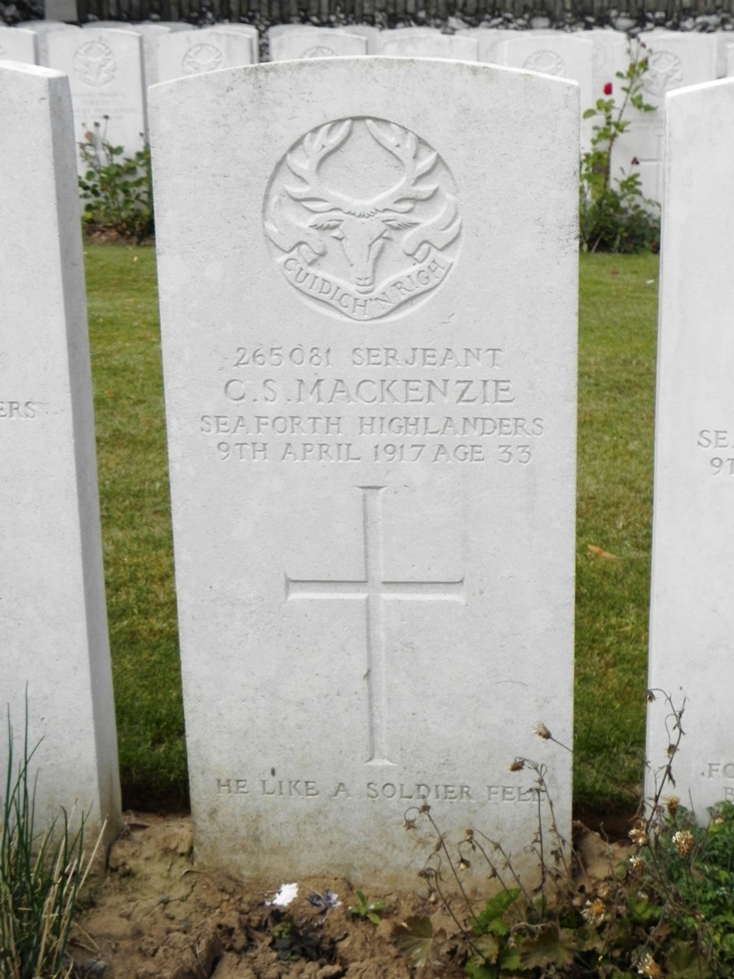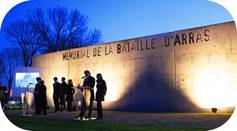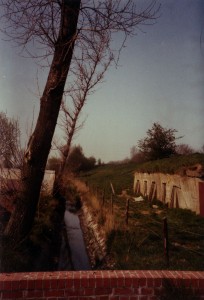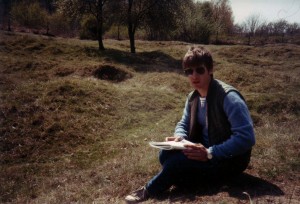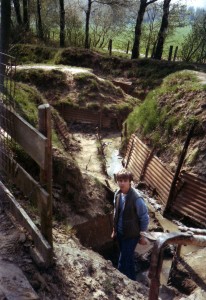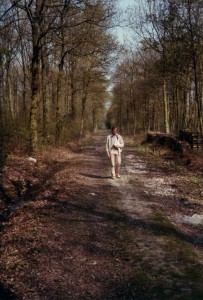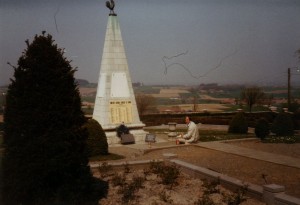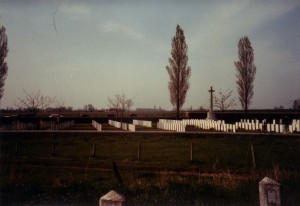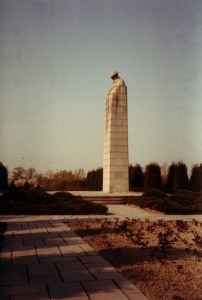Posts Tagged ‘battlefields’
New Battlefield Tour announced! ‘Western Front Footsteps’ 28 September – 1 October 2018
Following the success of 2016’s ‘Bristol on the Western Front’ and last year’s ‘The West Country at War’ tour trip that I organised with fellow historian, Clive Burlton, we are pleased to announce another trip for this coming autumn.
Stops will cover actions by units from Wiltshire, Somerset and South Wales as well as Bristol. The tour is named ‘Western Front Footsteps’.
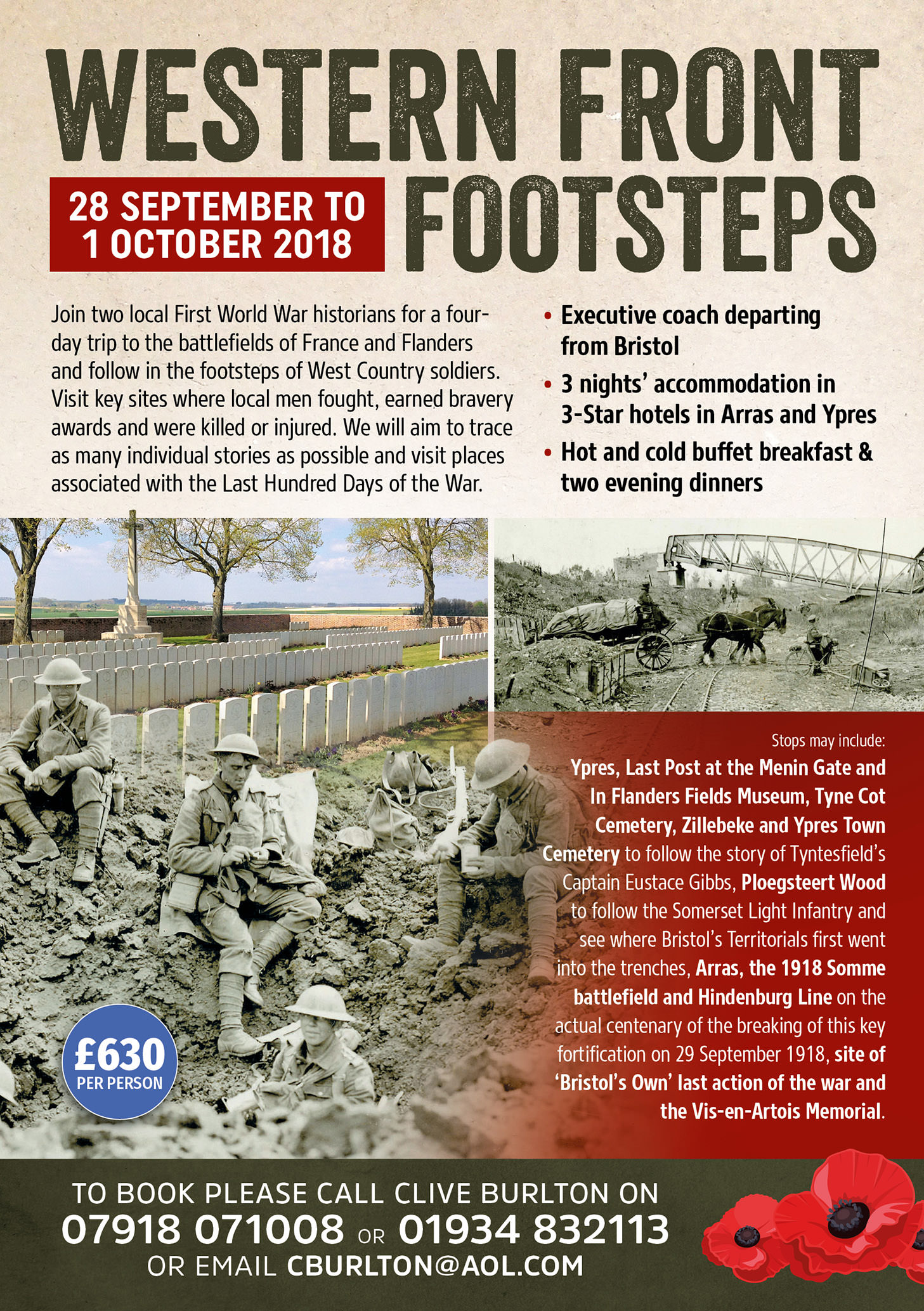
Once again we are travelling with our partners at Bakers Dolphin. The three night, four day tour will visit key sites where soldiers from the West Country fought, earned bravery awards and lost their lives.
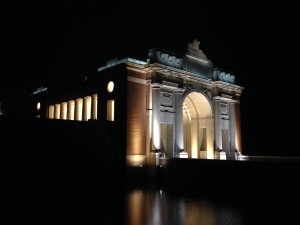
Menin Gate, Ypres
Travelling by executive coach we will depart from Bristol on 28 September and travel to Arras, stopping at sites of interest en route. The next day will be spent on the 1918 Somme battlefield on the centenary of the breaking of the Hindenburg Line – a momentous day that paved the way to allied victory. It is also the centenary of the last assault ever made by the 12th Gloucesters (Bristol’s Own) and we will walk their final attack. It will be special to visit this fascinating battlefield on such a poignant day.
On 30 September we will journey northward to the sacred Ypres salient , the wartime cauldron for so many of Britain’s soldiers. Whilst in Ypres we will attend the Last Post ceremony at the Menin Gate and visit the In Flanders Fields Museum in the Cloth Hall. Our time in Ypres will see us visiting sites around the salient including Ploegsteert (known as Plugstreet to the Tommies) to follow the 1st Somerset Light Infantry in December 1914, see where the Christmas Truce took place and visit the area in which Bristol’s Territorials first went into the trenches.

A key theme of this year’s tour will be looking into the wartime history of the Gibbs family from Tyntesfield (now a National Trust property) – their story is fascinating and heart-rending.

Ypres Cloth Hall – now the location for the In Flanders Fields Museum
Accommodation is based at the following 3-star hotels – Holiday Inn Express (Arras) and the Novotel (Ypres). Full details of cost, what is included and contact details to reserve a space can be found on the attached flyer.
We look forward to you joining us for another wonderful few days following in some Western Front Footsteps!
Following the success of last year’s ‘Bristol on the Western Front’ trip that I organised with fellow historian, Clive Burlton, we are pleased to announce another trip for October 2017.
This year we are broadening the net with less of a Bristolian focus. Stops will cover actions by units from Wiltshire, Somerset and South Wales. As such, we thought it apt to name the tour ‘The West Country at War’.
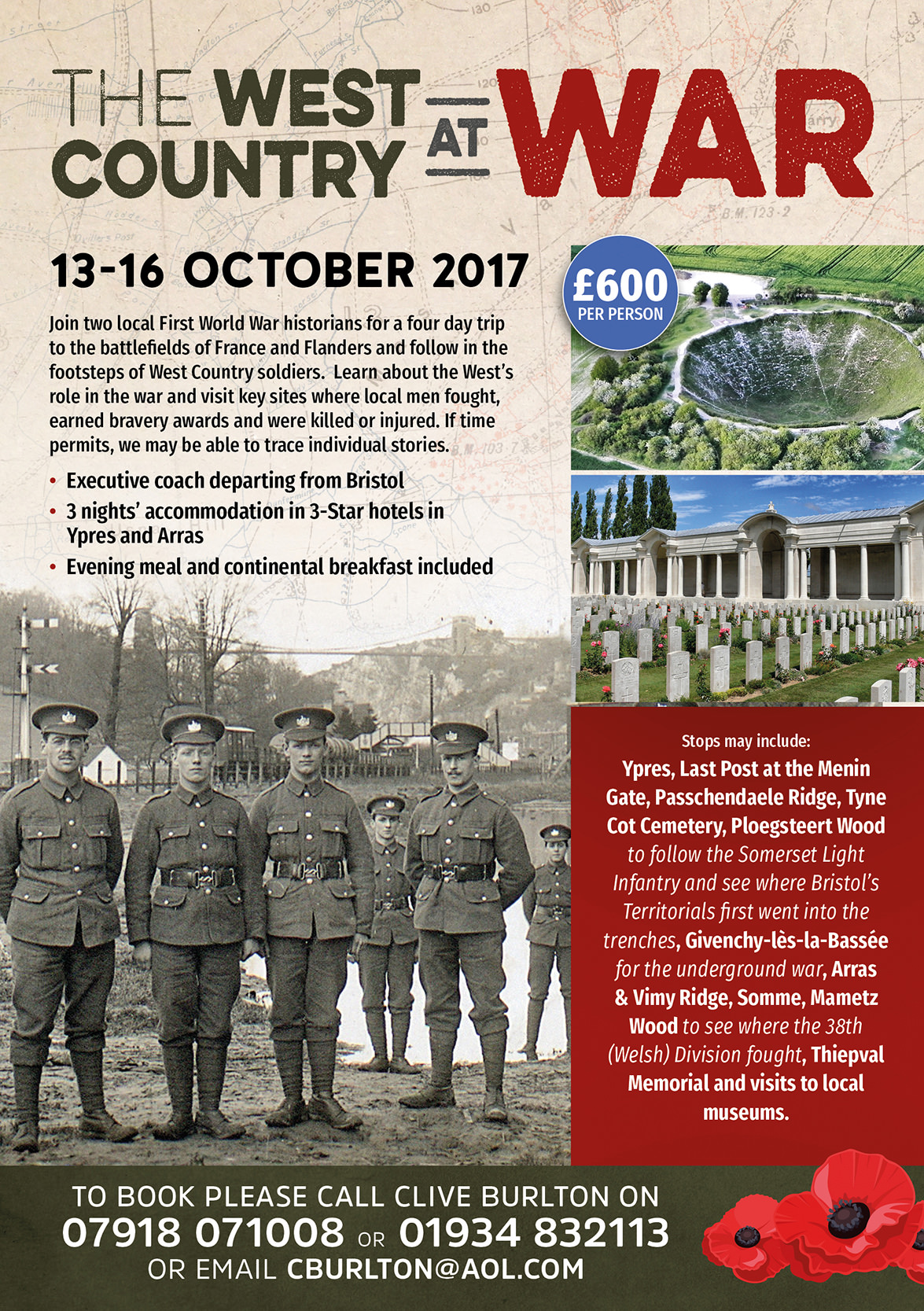
Once again we are travelling with our partners at Bakers Dolphin. The three night, four day tour will visit key sites where soldiers from the West Country fought, earned bravery awards and lost their lives.

Menin Gate, Ypres
Travelling by executive coach we will depart from Bristol on 13 October and travel to Arras, stopping at sites of interest en route. The next day will be spent on the Somme battlefields, visiting some well known (Mametz Wood) as well as lesser known sites on the 1917 battlefield!
The following day sees us journey northward to the sacred Ypres salient , the wartime cauldron for so many of Britain’s soldiers. Whilst in Ypres we will attend the Last Post ceremony at the Menin Gate. Our time in Ypres will see us visiting sites around the salient including Ploegsteert (known as Plugstreet to the Tommies) to follow the 1st Somerset Light Infantry in December 1914, see where the Christmas Truce took place and visit the area in which Bristol’s Territorials first went into the trenches.
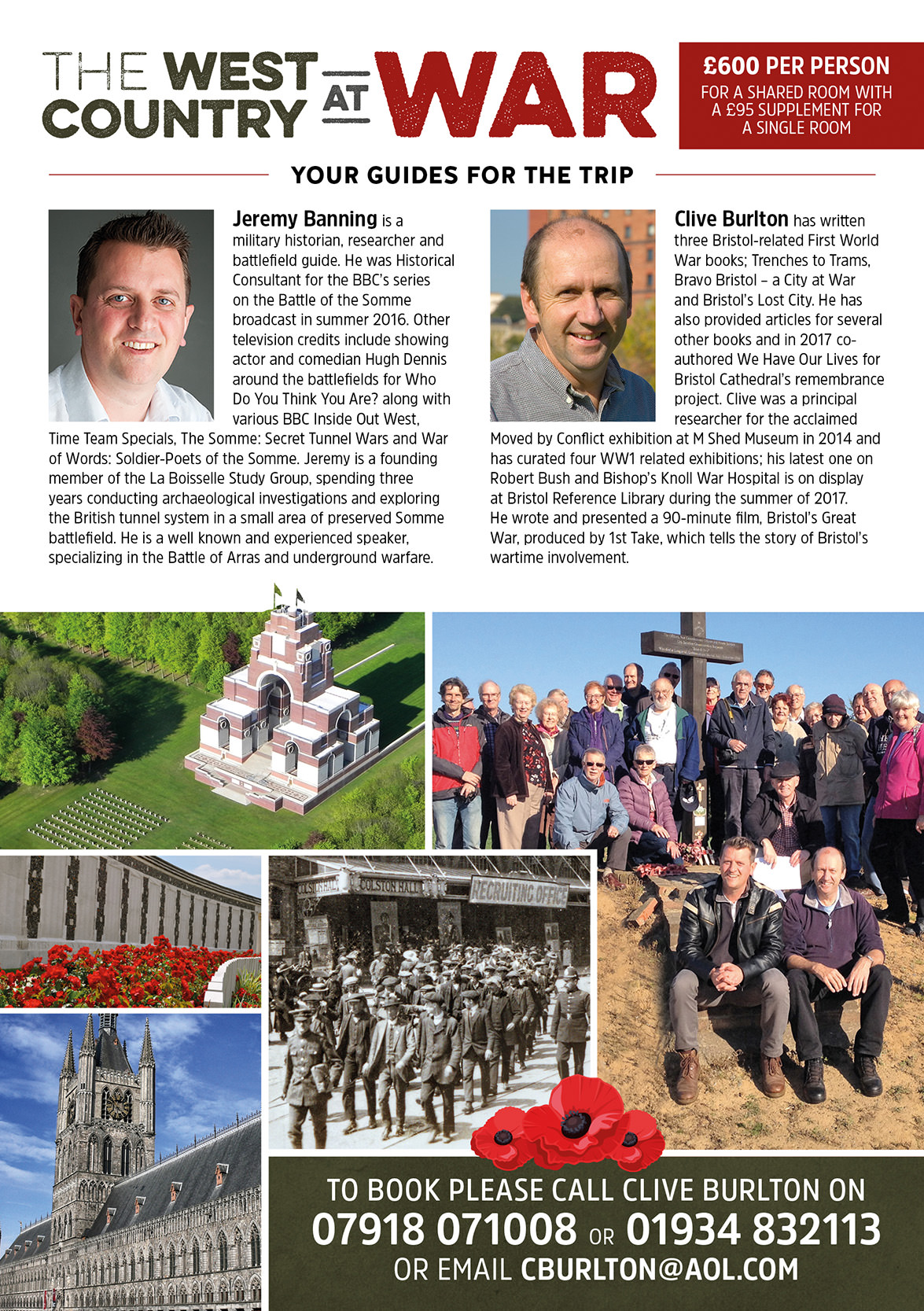
Accommodation is based at the following 3-star hotels – Holiday Inn Express (Arras) and the Novotel (Ypres). Evening meal and continental breakfast are included. If there is demand then Clive and I are happy to give evening talks. Last year we were heartened by the almost 100% attendance rate at our talks by those who had already had a long day on the battlefields.
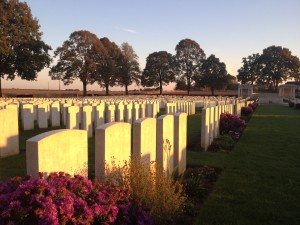
Delville Wood Cemetery, Somme
Full details of cost and contact details to reserve a space can be found on the attached flyer.
We look forward to you joining us for another wonderful few days!
Through my work for Historic England I have come to know many stories of Bristol’s soldiers in the war. A few years ago I met Clive Burlton, a local historian and writer with a superb knowledge of Bristol’s role in the war. Clive and I have given talks at the same venue on a number of occasions and over a post-talk beer often discussed the possibility of running a coach tour to the battlefields for people who want to find out more about Bristol’s wartime story.
So, here we are! I am pleased to announce that, with our partners at Bakers Dolphin, we are running a special tour:
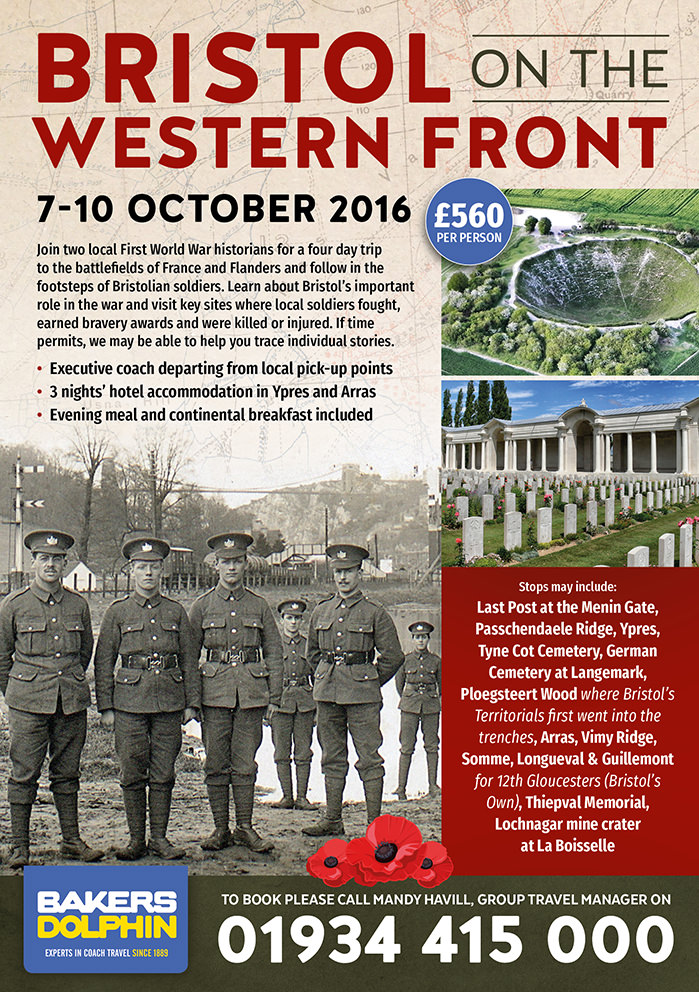
The three night, four day tour will visit key sites where soldiers from Bristol fought, earned bravery awards and lost their lives.
Travelling by executive coach we will depart from Bristol on 7 October and travel to the sacred Ypres salient, the wartime cauldron for so many of Britain’s soldiers. That evening we will attend the Last Post ceremony at the Menin Gate that night. The next day sees us visiting sites around the salient including Ploegsteert (known as Plugstreet to the Tommies) to see where Bristol’s Territorials first went into the trenches before heading south to Arras, our base for the remainder of the trip.
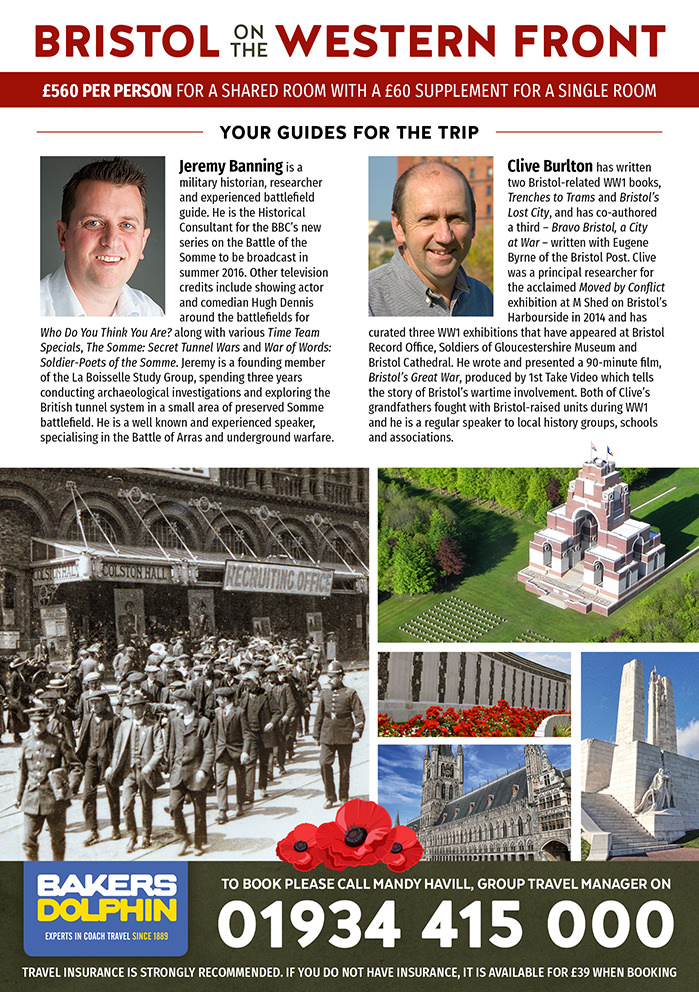
On Saturday 9th we will spend a day on the Somme battlefields, visiting key sites such as Newfoundland Memorial Park, Thiepval Memorial and the Lochnagar Mine Crater. We will also look at the story of the 12th Gloucesters (Bristol’s Own) in their actions at Longueval and Guillemont. The morning of our final day will be spent on the Arras battlefield, looking at the events surrounding the 12th Gloucesters (Bristol’s Own) action at Fresnoy on 8-9 May 1917.
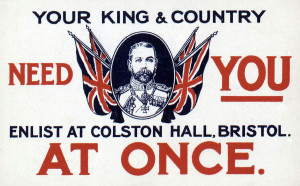
Wartime recruiting card for local soldiers to enlist at Colston Hall, Bristol
Accommodation is based at the following 3-star hotels – Novotel (Ypres) and Holiday Inn Express (Arras). Evening meal and continental breakfast are included. If there is demand then I will give a talk on the tunnellers’ war after dinner one night and Clive on a particular Bristol story the next night.
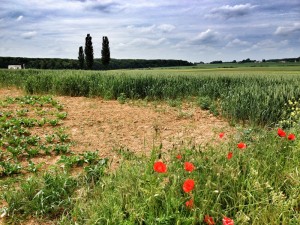
Guillemont – 12th Gloucesters (Bristol’s Own) attacked close to here on 3 September 1916
Individual visits can be accommodated if time permits and locations are close by.
The cost is a competitive £560pp, based on a shared room. For more details please contact me HERE or Mandy Havill, Group Travel Manager on 01934 415 000. I look forward to meeting you on the tour and sharing in Bristol’s fascinating history.
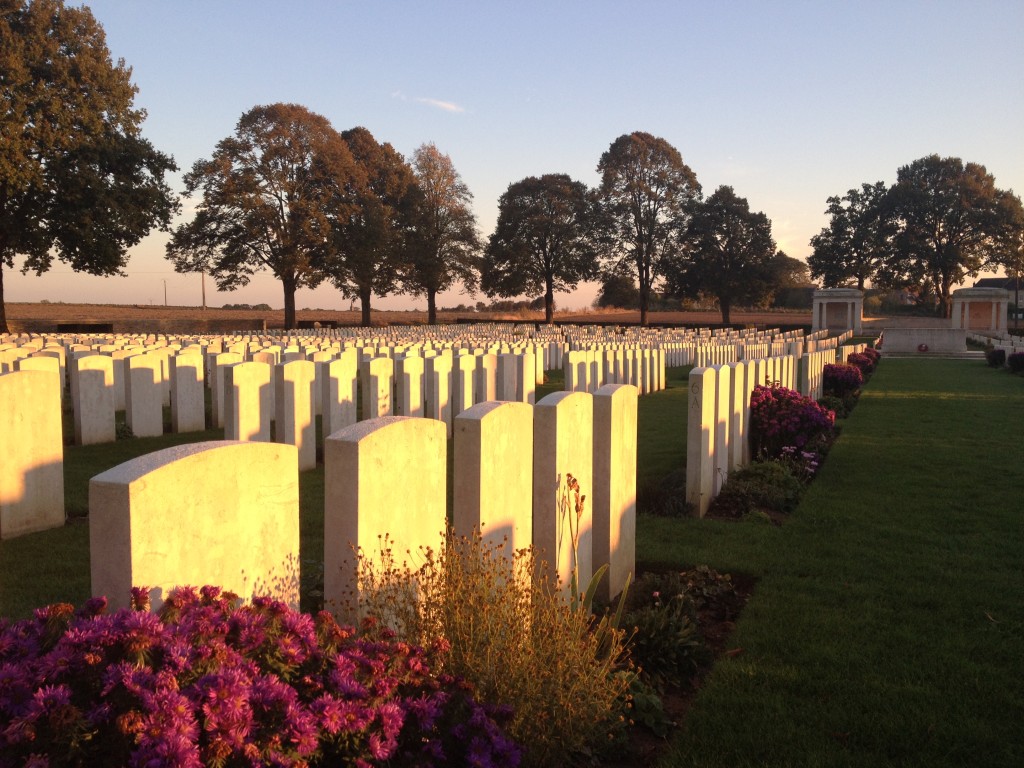
Delville Wood Cemetery, Somme
Last month I managed to stop in at the Arras battlefields when on my way down to La Boisselle for more site work. I only had a couple of hours before a lunchtime meeting in Peronne but still managed a quick recce for a private battlefield tour I am taking in September.
I have some clients coming from New Zealand who have a relative, Corporal Andrew McDonald MM, who was fatally wounded at the Battle of Arras. I have been compiling a detailed report on this soldier who served in the 6th (Morayshire) Battalion of the Seaforth Highlanders.
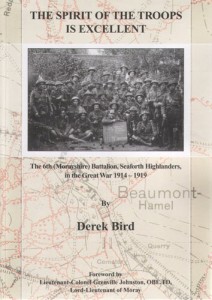
Derek Bird - "The Spirit of the Troops is Excellent." A first-class study of the battalion - highly recommended reading.
Andrew McDonald was in the battalion from its very formation and arrived in France in 1915. As part of 152 Brigade, 51st (Highland) Division he served throughout the Somme offensive including Bazintin-le-Grand, High Wood and the successful capture of Beaumont Hamel in November. He was awarded the Military Medal for his part in a raid on enemy positions in September 1916 on the Railway Salient near Armentieres. A most useful book on the battalion is Derek Bird’s ‘The Spirit of the Troops is Excellent’ which I can heartily recommend as a superb battalion study.
On the opening day of battle, Easter Monday, 9 April 1917 the battalion was to be involved from the off. Facing the German trenches northeast of the small village of Roclincourt they were tasked with capturing three lines of German trenches, the third of which was designed the Black Line. They would then consolidate these whilst the 1/5th Seaforths passed through them in the ‘leap-frog’ system to take the next two lines, the Brown and Blue Lines.
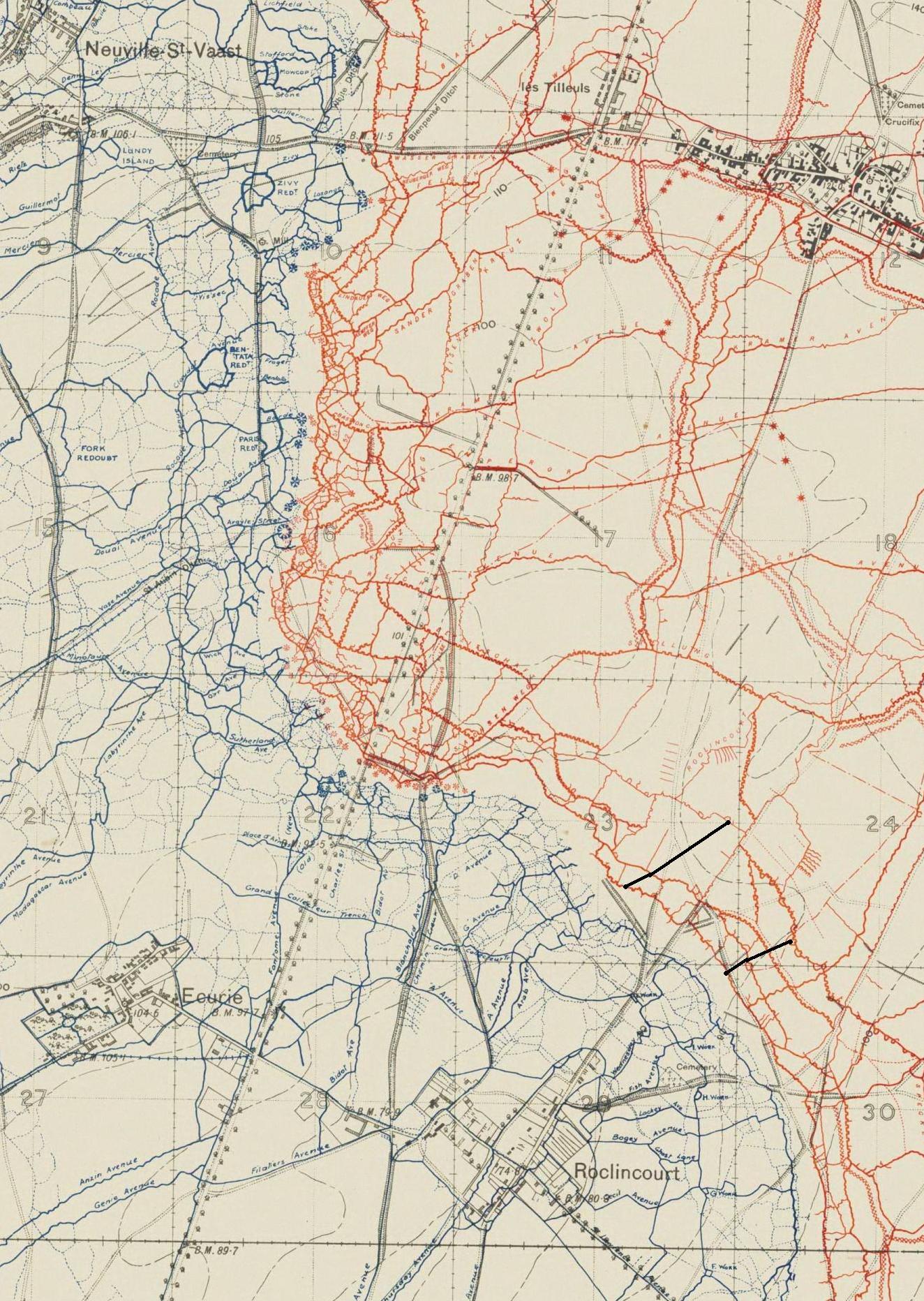
Trench map of Roclincourt-Neuville-Thelus sectors. The black lines are the boundaries for the 6th Seaforths attack on 9 April 1917. CLICK map to enlarge.
Andrew McDonald was serving in C Company – they had even more limited objectives, being tasked with taking and holding a section of the first two lines. D Company with a platoon of B Company would then push on to the Black Line – the final objective for the battalion.
As Andrew McDonald’s service record no longer survives it is very hard to know where he was fatally wounded and the war diary offers scant evidence. However, in September I will take his relatives, having travelled half way around the world, to the site of the jumping-off trenches occupied by C Company and let them stand where he stood on 9 April 1917. I am pretty confident that he was wounded in the fields in front of us, rising towards Farbus and Thélus on the southern shoulder of Vimy Ridge. The beautiful Highland Cemetery now stands close to the site of C Company’s advance. It is full of Highland Division men and is well worth a visit.
One casualty buried in the cemetery that particularly stood out for me whilst reading Derek Bird’s book was Sergeant Charles Mackenzie who was reportedly killed while engaged in a bayonet fight. One of his men was bayoneted and in a selfless act Mackenzie stood over his body to protect him from further wounding. Sadly he himself was then overcome and killed.
Fatally wounded on 9 April Andrew McDonald succumbed to his wounds on 13 April, having made it back to the huge hospitals near Etaples. He is buried in the vast and sobering Etaples Military Cemetery, another spot my clients will visit on their September pilgrimage.

Panorama overlooking Highland Cemetery. It is taken close to the site of the Battalion HQ during the opening stages of the Battle of Arras. The tree lined road on the left takes you to Thelus.
All of this took place just off the A26 motorway so please spare a thought and look to your right and the lonely Highland Cemetery just past Junction 7 next time you are heading south.
Total losses for the Battalion during the opening stages of the Battle of Arras were 9 Officers and 320 Other Ranks. Further trials awaited the battalion later in the month at Roeux and the Chemical Works during some of the most savage infantry fighting of the war. For those with an interest in the battalion Derek Bird has compiled a Roll of Honour to the fallen of the 6th Seaforths. It can be viewed here: http://www.scotlandnorthbranch.webspace.virginmedia.com/Roll-of-Honour/Index.htm
I had been invited to attend the annual service of commemoration for the Battle of Arras at the Wellington Quarry and had written a blog piece about the impending service which had been picked up by the WFA for inclusion on their website. Sadly I was unable to attend due to family commitments but I have been sent images and details of the event by Isabelle Pilarowski of the Wellington Quarry. The service is held at 0630hrs on 9 April each year. The early start is due to the start of battle in 1917 – Zero Hour was 5.30am. It is a gathering of people who want to pay their respects for the men involved in the huge British offensive at Arras in April and May 1917. So often overshadowed by the Battles of the Somme and Passchendaele, Arras stands as one of the three major British offensives of the war.
 I have a huge soft spot for the place, as a battlefield and a superb town to visit, and enjoy the quiet surroundings without the hordes of coaches and resulting pilgrims that can often be seen in some of the more popular battlefield stops on the western front.
I have a huge soft spot for the place, as a battlefield and a superb town to visit, and enjoy the quiet surroundings without the hordes of coaches and resulting pilgrims that can often be seen in some of the more popular battlefield stops on the western front.
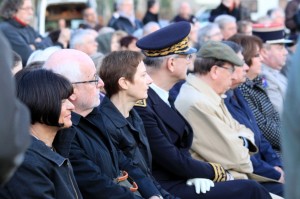 Isabelle tells me that the service went very well and that it was well attended by officials and visitors alike. Attendees included the Mayor, the Préfet, the Ambassador of New Zealand, representatives from Australia and Canada [denoting their countries role in the Battle – at Bullecourt and Vimy] as well as members from other French and British associations.
Isabelle tells me that the service went very well and that it was well attended by officials and visitors alike. Attendees included the Mayor, the Préfet, the Ambassador of New Zealand, representatives from Australia and Canada [denoting their countries role in the Battle – at Bullecourt and Vimy] as well as members from other French and British associations.
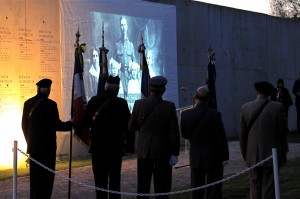 Of particular interest to me was the inclusion of extracts from the wonderful memoirs of Percy Clare, 7th East Surrey Regiment. As part of the 12th (Eastern) Division his battalion attacked up Observation Ridge on the first day of battle. After a rest in the middle of April the battalion was back in the line for the disastrous attacks of 3 May 1917 (Third Battle of the Scarpe) – 94 years ago today. The day is one of the blackest days for the British Army in the Great War and was a hideous muddle from its inception to its execution. Over 5,900 men were killed that day as the attack was repulsed with ease along the vast majority of the Thurd Army front. Very kindly the copyright holder, Rachel Gray, had let me copy a set of Percy’s memoirs for donation to the Wellington Quarry. They are probably the finest account extant of the battle and were quoted through the service. The service also included a reading of the poem ‘The Owl’ by Edward Thomas. He was killed on the morning of 9 April 1917 by a shell blast and is buried in Agny Military Cemetery:
Of particular interest to me was the inclusion of extracts from the wonderful memoirs of Percy Clare, 7th East Surrey Regiment. As part of the 12th (Eastern) Division his battalion attacked up Observation Ridge on the first day of battle. After a rest in the middle of April the battalion was back in the line for the disastrous attacks of 3 May 1917 (Third Battle of the Scarpe) – 94 years ago today. The day is one of the blackest days for the British Army in the Great War and was a hideous muddle from its inception to its execution. Over 5,900 men were killed that day as the attack was repulsed with ease along the vast majority of the Thurd Army front. Very kindly the copyright holder, Rachel Gray, had let me copy a set of Percy’s memoirs for donation to the Wellington Quarry. They are probably the finest account extant of the battle and were quoted through the service. The service also included a reading of the poem ‘The Owl’ by Edward Thomas. He was killed on the morning of 9 April 1917 by a shell blast and is buried in Agny Military Cemetery:
For further details of Percy Clare please see this blog piece or consult our book Arras: The Spring 1917 Offensive in Panoramas Including Vimy Ridge and Bullecourt
I have been sent some photos of a trip to the Ypres battlefields made in 1984. I was still in the second year of secondary school at this point so didn’t go along – the two intrepid travellers were my father and eldest brother, Mark (http://www.mgbtours.com/). For the both of them this was their first trip to any Great War battlefield. I am glad to say that it was certainly not their last – my father regularly visits both Ypres and the Somme with the rest of the Banning family and also with the wonderful Genesta Battlefield Club. As for Mark, he now spends his time as a full-time battlefield guide (and highly recommended he is too) so it is clear that this 1984 pilgrimage was the first of many visits to the hallowed ground of the Ypres salient.
These pictures, taken in the pre-digital era, have been scanned and tidied up by me. Ignoring the questionable fashions on display they show fascinating details of many oft-visited places around the immortal salient – all without the coaches of visitors that often accompany some of these spots nowadays.
Of particular interest are the shots of the Advanced Dressing Station on the banks of the Ieper-Ijser canal at Essex Farm Cemetery which show the site before its restoration in the 1990s. Modern shots can be seen by visiting this site. Visitors to the area can you buy ambien mexico will know of its association with John McCrae, author of ‘In Flanders Fields’.
Also worth noting are the low trees at the Brooding Soldier Memorial at Vancouver Corner. It is amazing how the horticulture and the inexorable work of nature has such an effect on the way a particular spot looks. It was this site that held their main interest as they remembered my grandfather, Private Seymour Henry Banning, 13th Battalion, CEF (Royal Highlanders of Canada) who was gassed and taken POW very close to the spot on or around 22 April 1915 – one of the first men ever to have been gassed in warfare.
Click on the pictures to see them at full size.
Many thanks to my brother Mark Banning for these photos.

